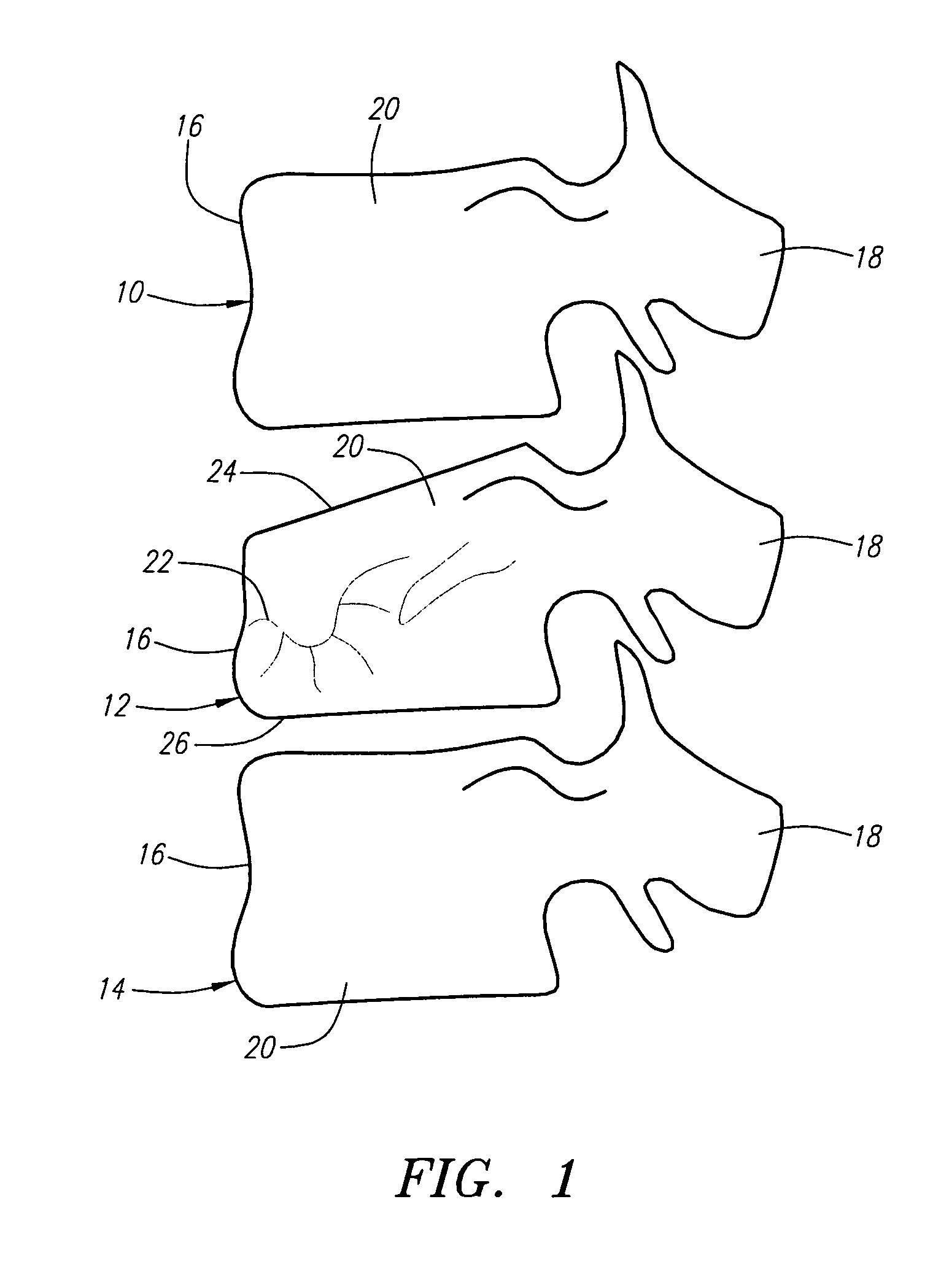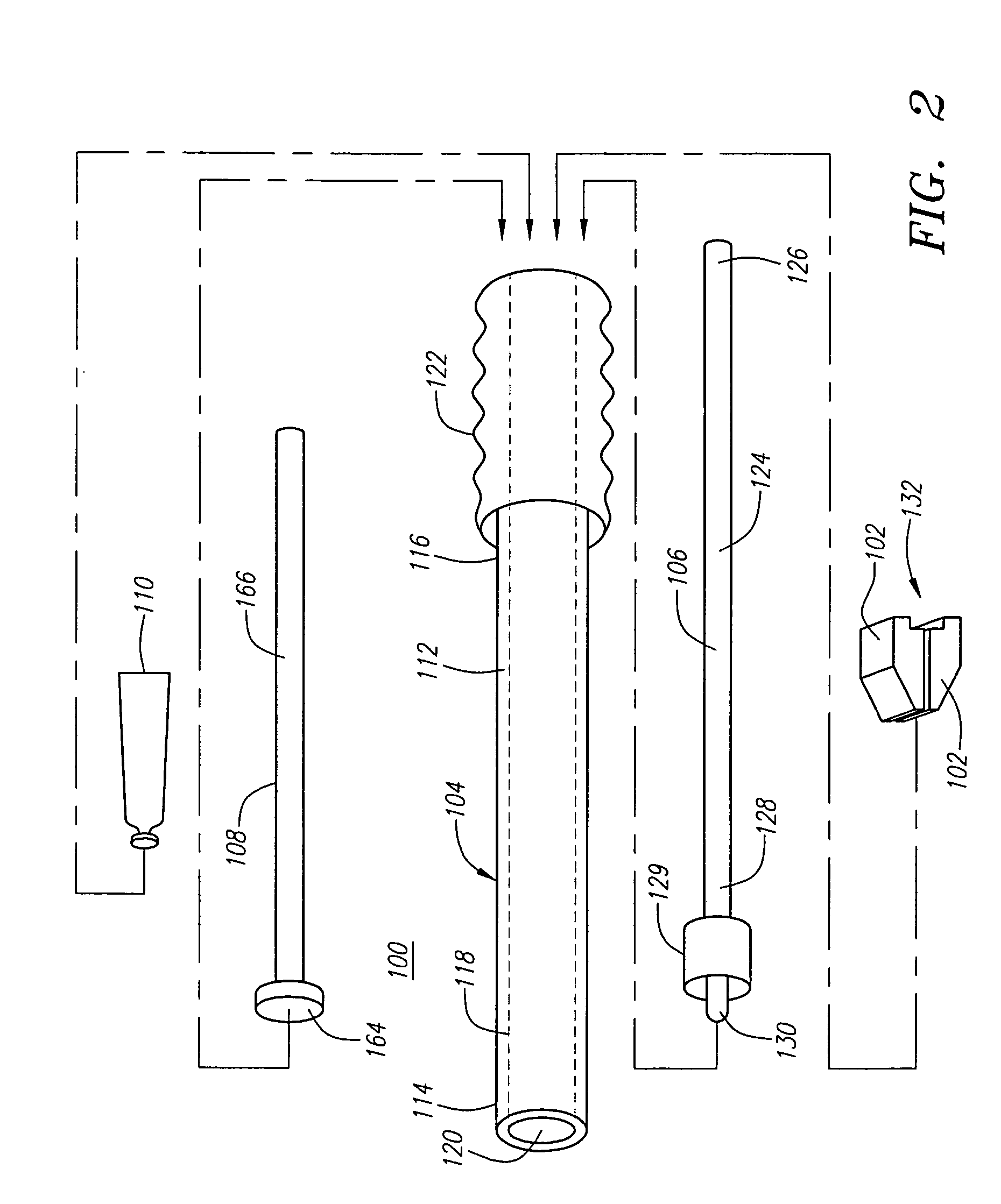Methods for reducing bone compression fractures using wedges
a technology of compression fractures and wedges, applied in the field of bone structure treatment, can solve the problems of limited distance movement of wedge-shaped devices relative to other wedge-shaped devices, and achieve the effect of reducing bone fractures and reducing compression fractures within the bone structur
- Summary
- Abstract
- Description
- Claims
- Application Information
AI Technical Summary
Benefits of technology
Problems solved by technology
Method used
Image
Examples
Embodiment Construction
[0039]Referring to FIG. 2, a bone fracture treatment kit 100 constructed in accordance with one preferred embodiment of the present inventions is illustrated. The kit 100 can be used for treating a bone compression fracture, and specifically, a compression fracture 202 within a vertebra 200 (shown in FIGS. 13-18). The kit 100 generally comprises a plurality of fracture reducing wedges 102 (shown in FIG. 2 as a pair of wedges 102), a delivery member, and specifically a cannula 104, for delivery of therapeutic agents (e.g., the wedges 102 and a therapeutic medium) into the vertebra 200, a wedge driver 106 for pushing the wedges 102 through the cannula 104 into the vertebra 200 in order to reduce the compression fracture 202, and an optional plunger assembly 108 for forcing a therapeutic medium 110 through the cannula 104 and into the vertebra 200 in order to stabilize and set the vertebra 200.
[0040]Referring still to FIG. 2, the cannula 104 comprises a shaft 112 having a distal end 11...
PUM
 Login to View More
Login to View More Abstract
Description
Claims
Application Information
 Login to View More
Login to View More - R&D
- Intellectual Property
- Life Sciences
- Materials
- Tech Scout
- Unparalleled Data Quality
- Higher Quality Content
- 60% Fewer Hallucinations
Browse by: Latest US Patents, China's latest patents, Technical Efficacy Thesaurus, Application Domain, Technology Topic, Popular Technical Reports.
© 2025 PatSnap. All rights reserved.Legal|Privacy policy|Modern Slavery Act Transparency Statement|Sitemap|About US| Contact US: help@patsnap.com



